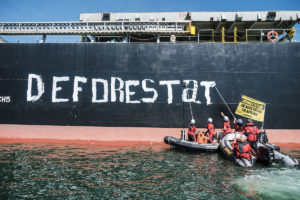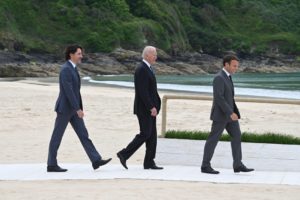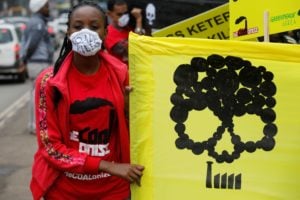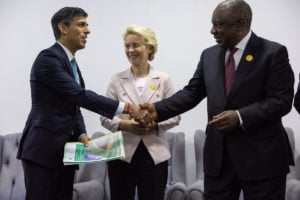On 7 September 2013, President Xi Jinping announced at the Nazarbayev University in Kazakhstan, a proposal to “join hands building a Silk Road economic belt”. That speech is widely considered the starting point for China’s enormous programme of overseas investment, connectivity and cooperation. First known as the Silk Road Economic Belt, it then became One Belt One Road, and finally the Belt and Road Initiative (BRI).
The speech framed the BRI as primarily concerning the Central Asian countries with historical links to the ancient Silk Road, but the initiative has since grown to encompass 148 countries on every continent excluding Antarctica. As of June 2023, these countries have seen just over US$1 trillion of investment and construction contracts for infrastructure projects, increasing trade and reams of cooperation plans under the banner of the Belt and Road. This has offered new hopes and opportunities for development.
But there have also been no shortage of controversies. The sometimes lax implementation of environmental and social standards and the dominance of high-carbon investments was one high profile area of contention in the roll out of the BRI. It is something China subsequently began to address, particularly since the 2nd Belt and Road Forum in 2019, with a call to “green” the Belt and Road.
Ten years on, how has the BRI evolved? And what should we expect from the initiative as it enters its second decade? China Dialogue asked six experts for their thoughts as the BRI turns 10 today.
Ma Tianjie
Freelance writer in Beijing focusing on environmental governance and Chinese overseas investment
When the BRI was first proposed by China, there was very little consideration for the environmental implications of Chinese investment overseas. In fact, exporting redundant Chinese industrial capacity to less developed countries was a stated objective of the initiative in its early days. Ten years later, there is a proliferation of policies and guidelines on “greening the BRI”. Climate and biodiversity considerations have featured ever more prominently in BRI conversations. In that sense, China has come a long way in terms of the environmental governance of its flagship overseas investment programme.
However, there is a well-justified criticism of the “green BRI” policies as toothless and unenforceable overseas. China’s Ministry of Ecology and Environment (MEE), the government body that has led the mission to “green” the BRI, lacks an overseas mandate and levers it can use against companies operating in a foreign jurisdiction, where standards and rules often lag far behind those applied inside China. But the greening of the BRI is not solely a regulatory and governance matter. In fact, one can argue that the most consequential green development in the BRI over the past decade is the pivoting of Chinese industrial policy overseas, enforced not through the MEE but rather by industrial policy makers such as the National Development and Reform Commission, with the assistance of their financing arms.
Today, not only has the BRI dropped the original policy of exporting overcapacity, it has also adopted a few sectoral policies aiming at aligning the initiative with the domestic agenda of creating markets for advanced Chinese technologies. Most notably, the 2021 announcement to stop the export of coal power through BRI was a typical industrial policy intervention implemented via cutting off financing. As we move into the second decade of the BRI, China’s stated intention of increasing support for green and clean energy along the BRI would also benefit not just from statements of intent, but practical industrial policy intervention.
Chen Yunnan
Research fellow, Overseas Development Institute’s Development and Public Finance programme
When the BRI was announced, it was the latest phase of China’s globalisation, and reflected the needs and spillovers of its domestic economy. At that time, it was to offshore domestic overcapacity, to support major heavy industries and export Chinese technologies and equipment. As China’s domestic economy and its priorities have shifted, so will the contours of the BRI.
One of the biggest shifts has been in financing. Since 2016, China’s financial regulators have sought to deleverage its banking sector. The spillovers of this have already been seen in the huge decline in official financing which predated Covid-19 and has been exacerbated by debt-sustainability challenges in the post-Covid era. This kind of financing is unlikely to return to its peak. Already, we’ve seen a shift away from debt-financed megaprojects to a focus on “small and beautiful” projects on the BRI.
Going forward we may see a move towards more innovative means of green finance. Domestically, China’s commercial banks, such as ICBC and Bank of China, have been major issuers of green bonds, whose proceeds can be used to support renewable energy and other green infrastructure investments. So far, this has seen limited use in the BRI, but it could be a lower-risk means of raising finance for this much-needed infrastructure investment.
China’s low-cost clean technology can also be a huge boon for developing countries in paving a low-carbon growth pathway – conditional on substantial financing. Just as the massive infrastructure megaprojects in the BRI were a spillover of its domestic infrastructure investment, China’s own domestic energy transition is likely to have spillovers overseas. This is the case both in the export of new technologies to new markets, such as renewable energy and new energy vehicles, and in the demands for critical minerals, such as copper, lithium, and other rare earths that will be integral to these new green supply chains. What will be crucial is how Belt and Road countries leverage these opportunities to upgrade their own industries. This is an area where new development cooperation initiatives such as the Global Development Initiative, in tandem with the evolving BRI, could play a role.
Lina Benabdallah
Associate professor of politics and international affairs, Wake Forest University
Ten years into the making of the BRI, it is still not clear what are its parameters, total budget, or expansion aspirations. However, when it comes to Africa-China relations, the first African countries that signed BRI agreements did so in 2017. The Covid-19 pandemic further delayed several African countries from realising their first BRI projects.
As a relatively newer initiative in Africa, the BRI has not yet been fully put through the test of time. Yet, we know from Afrobarometer surveys conducted in 2021 that 63% of surveyed Africans believed China’s economic and political influence in their countries to be positive. Likewise, prospects of BRI bringing investments and infrastructure projects remain attractive for political elites. For example, Algeria’s President Tebboune, during a state visit to China last month, stated that the country was ready to play an active part in BRI and signed 19 agreements to expand Sino-Algerian cooperation in a variety of sectors including technology, energy and defence.
There have also been, over the last few years, concerns about the fiscal sustainability of several BRI projects in Africa. Some projects including BRI port-related infrastructure projects and mineral resource extraction deals, both deemed strategic in the eyes of Western governments, have received a lot of media attention. For Africans, the rivalry over these strategic investments and critical raw minerals can be a blessing as well as a curse. African leaders and stakeholders more broadly have to position themselves as active partakers in global economic trends such as the energy transition. This will be crucial in order to avoid depending on exporting low-value raw minerals without taking advantage of the potential of participating in the production of electric batteries, vehicles, and other higher-value chain goods. Africans are poised to play vital roles in global transformations if they play to their strengths and negotiate value-adding deals under BRI or other international cooperation frameworks.
Margaret Myers
Director, Asia & Latin America Program Inter-American Dialogue
The past few years have been characterised by a tapering off of Chinese economic engagement with Latin America, whether through BRI or more broadly, since Brazil, Colombia, and a handful of other Latin American nations are not technically BRI members.
This tapering doesn’t apply to the trade relationship, which has underpinned the China-Latin America dynamic for more than two decades, driven by China’s pursuit of food, energy, and broader supply chain security. But investment and finance have slowed as Chinese companies focus on smaller projects in sectors supportive of China’s own economic growth objectives. Aside from a pervasive focus on acquiring energy generation and transmission assets, Chinese interest in BRI-esque megaprojects has in many cases been replaced by a focus on technological and innovation-related ventures and the minerals and metals that support them.
Lessons from over two decades of Chinese engagement with the region have also shaped BRI prospects. Once a primary recipient of Chinese attention in Latin America, Venezuela no longer features among the top destinations for Chinese banks and companies. Chinese companies are seemingly dissuaded by high political risk in some parts of the region. As they manage mounting sovereign debt, some Latin American governments are also seemingly wary of pursuing more China-backed projects. In Chile, certain politicians have also expressed concern about the degree of that country’s economic dependence on China, even though investment there is still more limited than in many other parts of the region.
China’s evolving interests in Latin America will ensure a mixed environmental record, even as it promises a greener BRI. China has played a principal role in the delivery of renewable energy solutions and in transport electrification, but Chinese company activity in the region’s mining sector has grown amid surging demand for critical minerals. China also remains a major driver of large-scale soy and other agricultural production in Latin America, with implications for environmental sustainability.
Oyintarelado (Tarela) Moses
Data analyst, Boston University Global Development Policy Center
Since its inception, the BRI has increased the amount of aid, loans and investment available for developing countries. From 2008–2021, China’s two development finance institutions, China Development Bank and the Export-Import Bank of China, alone supplied almost a half a trillion in sovereign loans, equivalent to 83% of loans issued by the World Bank, the world’s largest development bank. Such credit has given countries across Asia, Africa, Europe and Latin America and the Caribbean new access to capital for development projects. Notably, much of that went towards projects that were ineligible for financing from traditional bilateral lenders.
At the same time, BRI financing expansion elevated risks to the environmental sustainability and debt profiles of BRI recipients. Chinese loans were heavily directed to fossil fuel energy projects and some supported projects overlap with environmentally sensitive territories, posing risks to recipient countries, biodiversity and local communities. Worsened by the Covid-19 pandemic, several BRI financing recipients have experienced high levels of debt distress, although so-called “debt trap diplomacy” has not been proven in these countries.
These outcomes in part explain the recent decline in loans from China’s development finance institutions. As early as 2016, China’s financial regulators released several risk-prevention and green-financing guidelines for overseas banks, and China emphasised risk-management and debt-sustainability practices during the Belt and Road Forum in 2019. China now appears to be addressing financial and environmental issues presented by BRI funding to China and recipients. Chinese overseas lenders are encouraged to finance in smaller values for more environmentally and socially beneficial projects. Meanwhile, financing is diversifying beyond loans to equity investments and even China’s overseas development investment funds, such as the Silk Road Fund. Instead of a BRI phase out, future BRI financing will likely change form and scope by refocusing more on financial and environmental sustainability, as it pairs with other initiatives like the Global Development Initiative.
Zofeen Ebrahim
Journalist, Pakistan
Growing up in Lahore, Punjab province, in the 1970s and 80s, I knew many Chinese. Hair and beauty salons for women were owned and run by Chinese women, as were the best Chinese restaurants, and did a roaring business. All of them spoke in Urdu and English, wore Pakistani dress and their children studied with us. Years later, in the 2010s, a new wave of Chinese workers came to Pakistan. This time they were bankers, company owners, engineers, construction and mine workers, working on infrastructure projects under the China-Pakistan Economic Corridor (CPEC).
But for the most part, we did not interact with them. Along with the huge language barrier, most Chinese workers live in compounds on their project sites under tight security. They rarely mingle with ordinary Pakistanis and therefore never experience Pakistani culture first hand.
As a journalist reporting on CPEC over the last decade, I have had to go through long processes just to get permission to talk to a Chinese engineer working at the solar farm in Bahawalpur, or a Chinese mine worker in Tharparkar, or a port official in Gwadar. And then too, they would only talk about their work. It was almost impossible to find out how it was for them living and working in Pakistan.
This opacity and lack of contact between Chinese and Pakistanis has contributed to mistrust and suspicion about Chinese projects.
In addition, CPEC has continually over-promised and under-delivered. For example, Pakistani authorities say CPEC is a “game changer” that has created nearly 200,000 jobs for Pakistanis, but locals at numerous project sites I have visited are often disgruntled and complain about lack of employment opportunities.
Opacity has also contributed to suspicion about Pakistan’s debt to China, which grew as a result of loan-based finance for CPEC projects, and the coal power plants still under construction.
The way I see it, as CPEC moves into its second decade, it needs to gain the trust and understanding of Pakistani people. Instead of a top-down approach, ask local people what they want, give them ownership and agency over this initiative.
Allowing and encouraging better media coverage of CPEC would be one step towards improving trust and understanding, even if journalists point out the lapses. China should allow criticism and not feel threatened.














